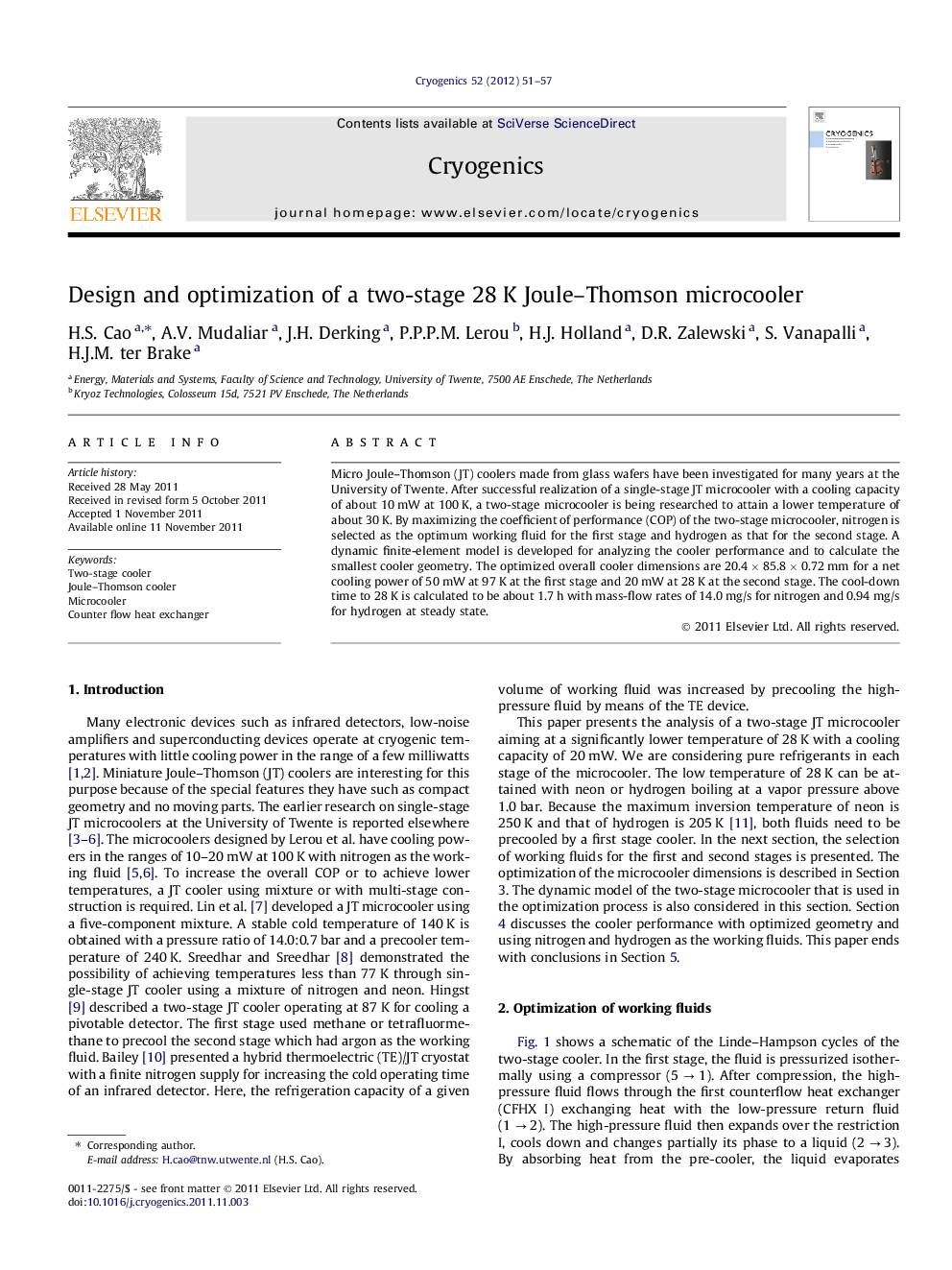| Article ID | Journal | Published Year | Pages | File Type |
|---|---|---|---|---|
| 1507768 | Cryogenics | 2012 | 7 Pages |
Micro Joule–Thomson (JT) coolers made from glass wafers have been investigated for many years at the University of Twente. After successful realization of a single-stage JT microcooler with a cooling capacity of about 10 mW at 100 K, a two-stage microcooler is being researched to attain a lower temperature of about 30 K. By maximizing the coefficient of performance (COP) of the two-stage microcooler, nitrogen is selected as the optimum working fluid for the first stage and hydrogen as that for the second stage. A dynamic finite-element model is developed for analyzing the cooler performance and to calculate the smallest cooler geometry. The optimized overall cooler dimensions are 20.4 × 85.8 × 0.72 mm for a net cooling power of 50 mW at 97 K at the first stage and 20 mW at 28 K at the second stage. The cool-down time to 28 K is calculated to be about 1.7 h with mass-flow rates of 14.0 mg/s for nitrogen and 0.94 mg/s for hydrogen at steady state.
► A two-stage microcooler is designed to obtain a cold temperature of 28 K. ► The working fluids of the microcooler are optimized to yield maximum coefficient of performance (COP). ► The optimum working fluids are nitrogen and hydrogen for the first and second stages respectively. ► The optimum dimensions of the microcooler are 20.4 × 85.8 × 0.72 mm. ► The microcooler has a net cooling power of 50 mW at 97 K and 20 mW at 28 K.
